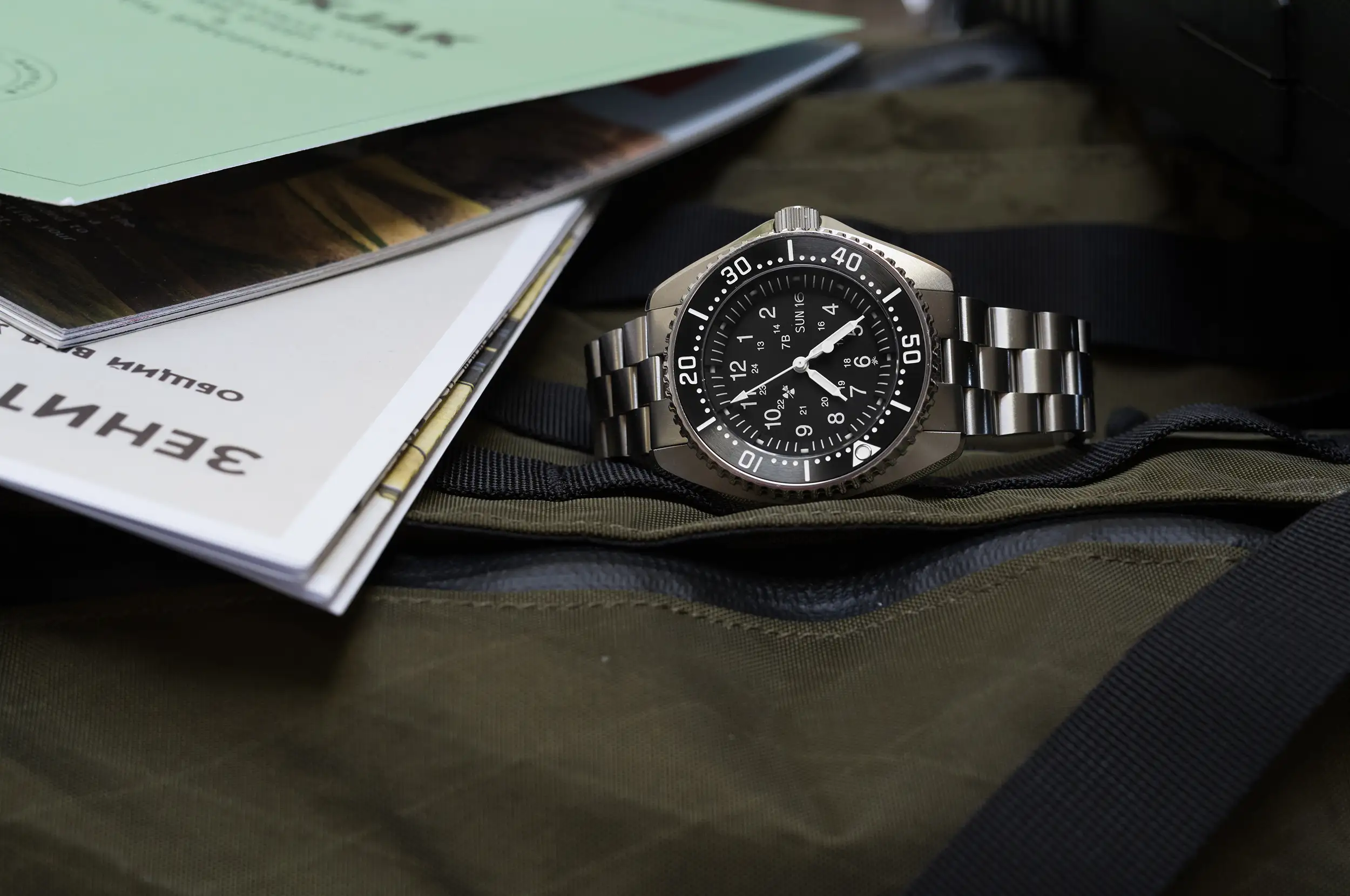Tool watches are easy things to romanticize. They inspire visions of daring adventures, and open up a world of possibilities in the process. Their rich histories and purpose built features draw us in, and maybe even open up new perspectives in the process, but at the end of the day, they are still tools. We add meaning to them through our own experiences, even if we aren’t navigating through remote jungles during war time, or running covert ops in a foreign land, we can still find meaning in these watches through far more civil activities. (Explore this concept further in this article about understanding the attraction of the tool watch.) Conceptually, these genres really just dictate how the watch is marketed.
It’s not just the “tool watches” being released today that are technically robust and capable of withstanding the rigors of everyday use and abuse. The hard categories to which we assign watches are mostly aesthetic markers and guidelines, and serve to define the marketing strategy placed around a watch’s release. What we actually make of it comes down to the user. There exists a subset of tool watches, however, that take their role a bit more seriously, and these are military watches.
Military watches present a slightly more opaque genre which can be defined in a few ways. It must also be noted that there exist plenty of tool watches that have seen combat in the field, but are not military-issued watches. With this in mind, there are three categories in which we can place these watches: tool watches that have seen active duty; military-inspired watches; and military-issued watches.
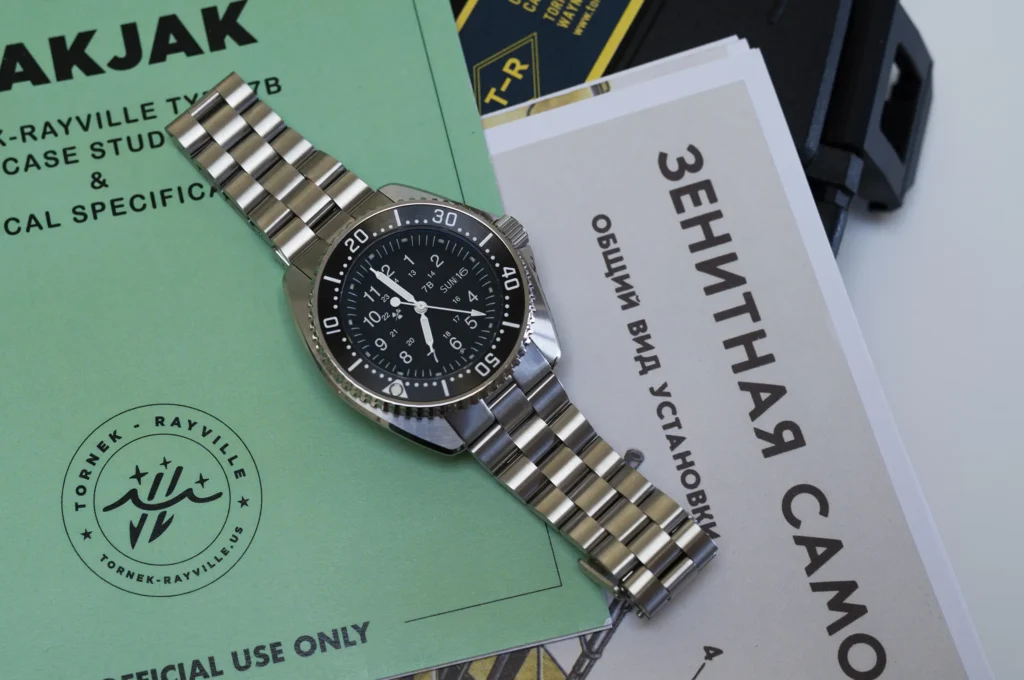
Military-issued gear is quite straightforward. These are items that have gone through a formal approval process and procured from approved manufacturers. These items are issued from the Central Issue Facility (CIF) and signed for, and then returned at the completion of service as they belong to the unit. The watches that fall into this category were designed built around military specifications (eg. FSX-797 the first Navy spec for a submersible watch) by approved manufacturers.
History
The spec 22717A represented a step forward in acknowledging the evolving needs of Navy divers, meaning a 400ft (~120M) depth rating and non-magnetic materials. With the rising popularity of recreational diving and dive watches, there were plenty of commercially available watches that fit the bill. This led to watches like the Benrus 7951, Doxa 300T, Rolex (and Tudor) Submariner, and the Tornek Rayville TR900 all being used formally by the military.
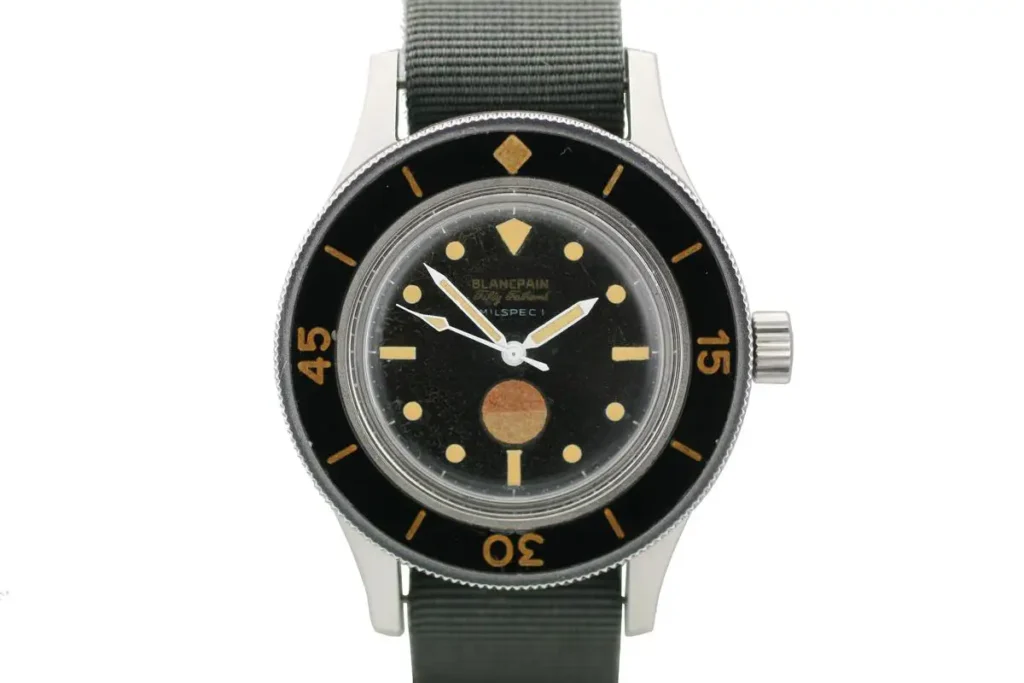
Understanding the Tornek Rayville TR900 requires a step back, as this brand has a rather unique origin story that dovetails with the formation of the Navy’s Experimental Diving Unit (NEDU), and their Underwater Demolition Team (UDT, or what we now know as SEALs) in the ‘50s. The Navy initially provided a specification to manufacturing partner Bulova for a watch that would suit their needs, though they were prepared to hedge that request by putting a few commercially available dive watches through testing to find the best possible option.
In the spring of 1958, the NEDU performed a battery of tests on an Enicar Seapearl 600, a Blancpain Fifty Fathoms, and a Rolex Submariner ref. 6538 while they awaited the requested watch from Bulova. The goal was to ascertain the usability and reliability of these watches in the types of conditions the divers would be experiencing. Notes from the tests focus on watertightness, luminosity, the bezel ring, and strap, with comments on how each performed during testing. Only the Blancpain Fifty Fathoms, distributed by Allen V. Tornek & Co. out of New York, would pass the tests in an acceptable fashion.
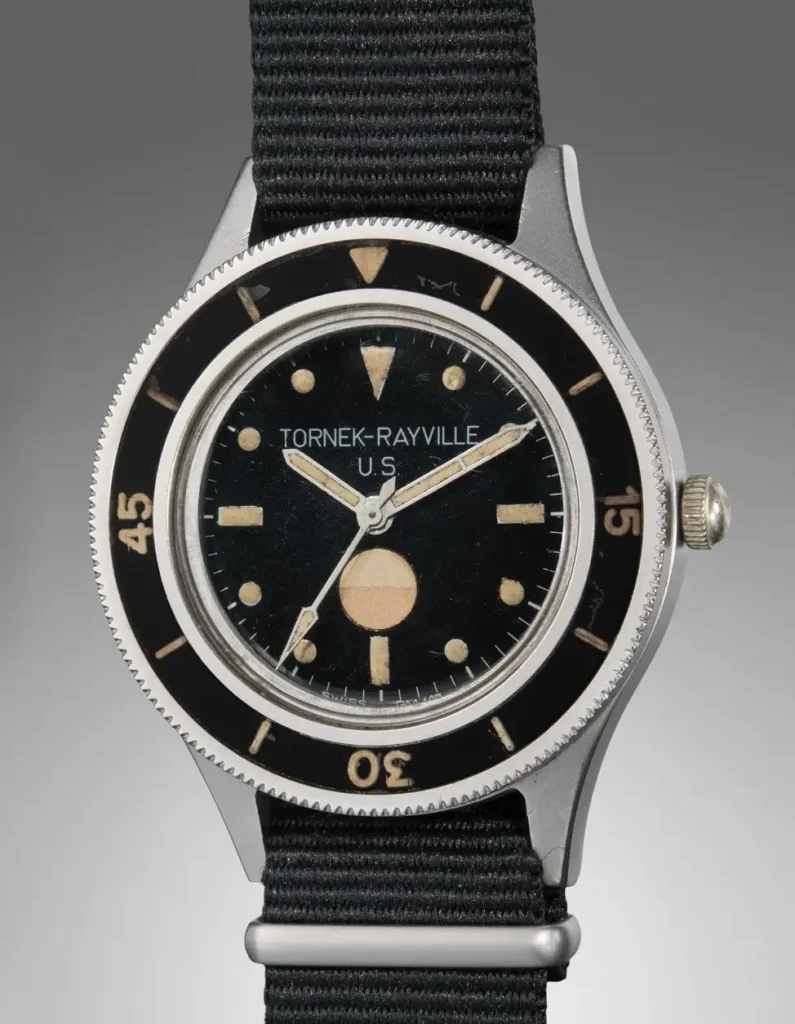
The Fifty Fathoms passing these tests by the US Navy should come as no surprise, given the fact that it was largely designed by the French Navy (Marine Nationale) and their dedicated underwater unit, the ‘Nageurs de Combat’ in the early to mid ‘50s. The concept was put forth by Captain Bob Maloubier, and Lieutenant Claude Riffaud, who developed the specifications around which Blancpain agreed to produce, resulting in the Fifty Fathoms. More on that story from Jose Pereztroika right here.
The full report from these tests is available to read right here.
When the Bulova MIL-SHIPS watch was eventually completed, it was put through the same tests and would not pass muster thanks to ill-fitting bezels and unreliable movements. It’s worth noting that the Enicar performed admirably, but lacked a timing bezel. This would leave the Fifty Fathoms as the clear frontrunner for selection. However, the Buy American Act, which was signed into law in 1933 by President Hoover (on his final day in office), prevented the Navy from making the order from the Switzerland based Blancpain.
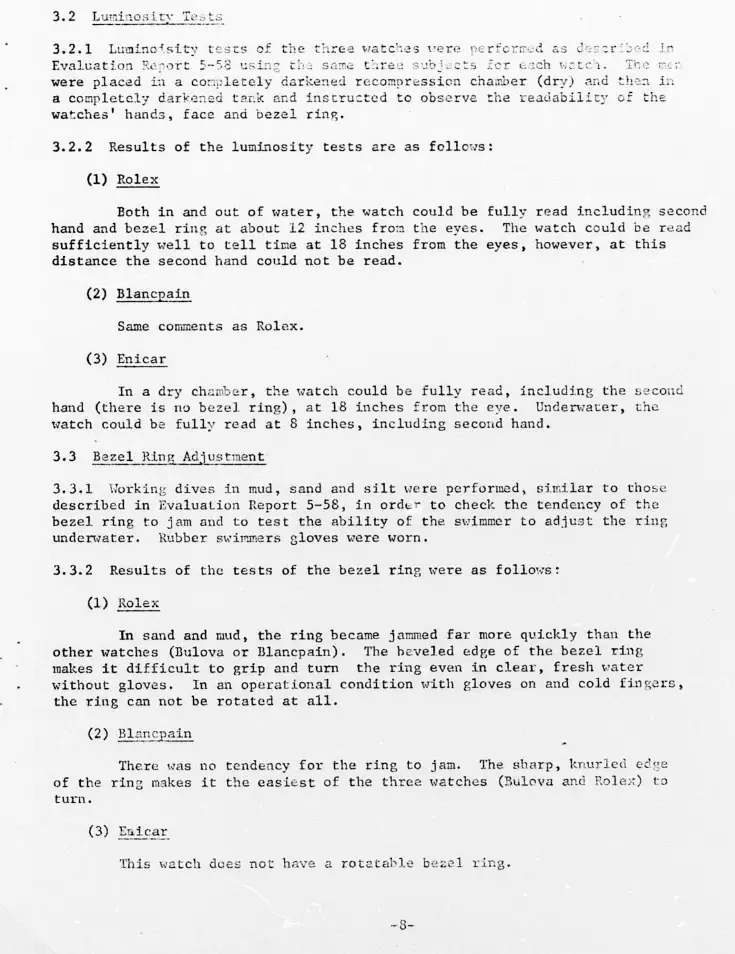
This brings us back to the New York based distributor, Allen V. Tornek. Allen suggested that Blancpain print dials with the label Tornek Rayville (his own last name, and Rayville, a take on Blancpain’s hometown of Villerey) and sell them to the Navy through his distribution company, effectively side-stepping the Buy American Act. The plan worked, and by the time the Navy SEALs were formed from the UDT in the early ‘60s, they were issued these new Tornek Rayville TR900 watches.
This kind of lore serves as the foundation for the Military watch sub-genre, with many of the watches that were produced explicitly for, found themselves in service of the military, serving as ripe inspiration for modern day brands both small and large. Tornek Rayville’s history is linked to this process, having been created in order to get these watches onto the wrists of active Navy divers. Rights to the name were acquired in the mid 2010’s by Bill Yao, the proprietor of MKII Watches, and it wouldn’t be until 2022 that we’d see an official Tornek Rayville watch released. This was the TR660, a modern take on the original TR900 meant to re-launch the brand.
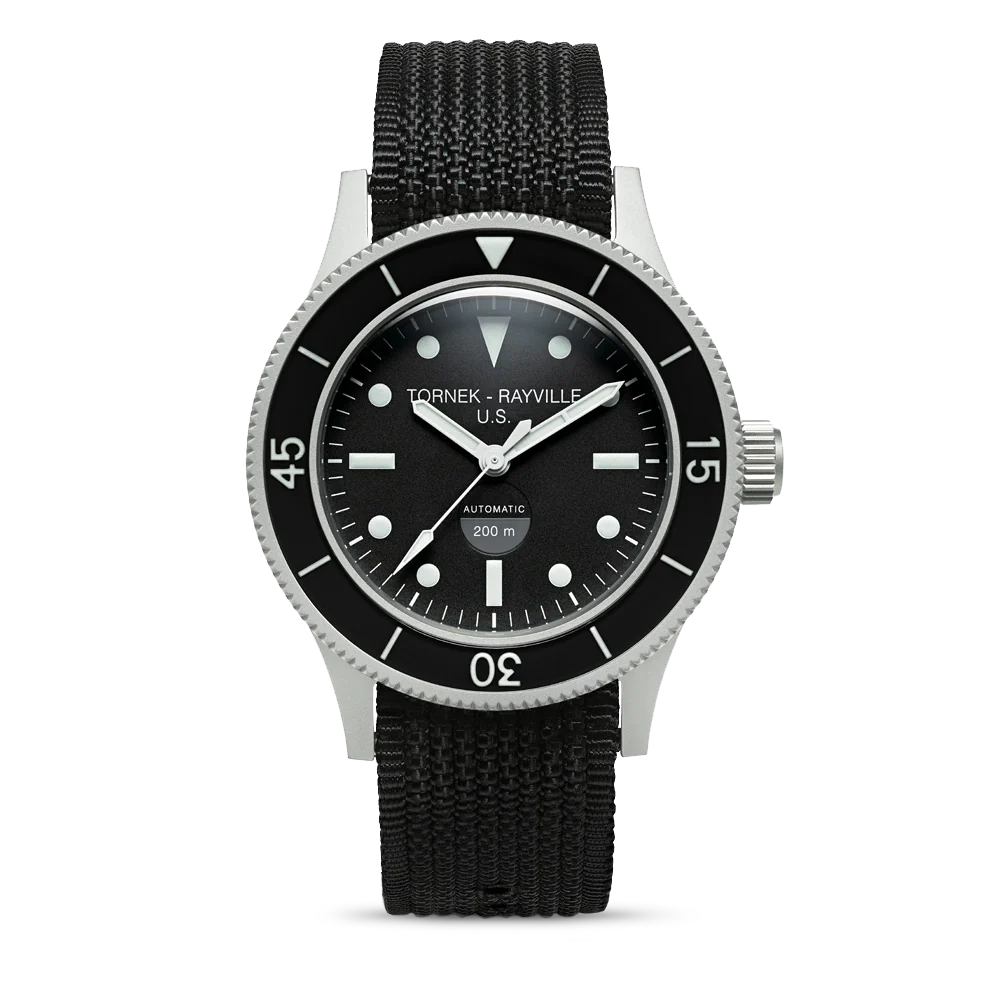
This year, Tornek Rayville has introduced their third watch, the Blakjak, which is based on the design of an issued watch from the ‘90s, the Stocker and Yale SANDY 660 (aka MIL-W46374F/ NSN no. 6645-01-364-4042) manufactured between 1995-1998. While that watch did make it onto the Government Qualified Products List (QPL), it did not see widespread issuance coming in the waning years of the Gulf War I era, and few examples exist to this day. The watch itself was unique thanks to its steel case in a time dominated by Cheap Black Plastics (CBPs).
The Tornek Rayville ‘Blakjak’ Type 7B
The new Tornek Rayville Type 7B watch is built as a modern interpretation of the SANDY 660. This is not a Military-issued watch, but it has all the hallmarks you might expect of one. From the ‘no rad’ symbol on the dial, to the marking on the caseback, this is a watch that looks every bit the part. Further still, Tornek Rayville has produced a bit of fictional story telling about how it would be put to use in the actual combat scenarios, complete with enough Military lingo to fill a field manual. The presentation paints a clear picture here, and firmly places this watch into the ‘military-inspired’ category. But would it actually be any good in the field?
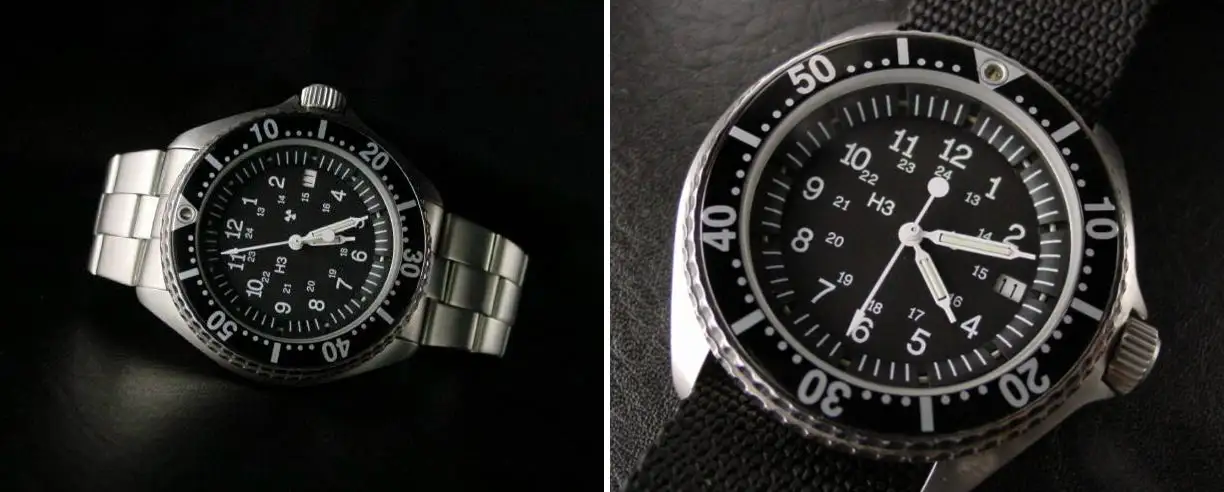
My take on this watch is that it’s more about capturing a piece of Military history and less about creating a great tool watch. Seen in this regard, the Blakjak Type 7B does a superb job of recreating everything great about a somewhat obscure Military watch from the ‘90s. It tightens up a few details here and there, but never loses the plot. This watch also nails some of the small, interesting details that make for an intriguing experience on the wrist and in hand. There is something slightly generic about this and many other Military designs, and for good reason, they are built for a singular purpose, but this watch manages to capture a bit of personality at the same time.
The wide steel base of the Type 7B measures 46mm in diameter, while the towering bezel unit measures 42mm wide. It is 13mm thick, and 48.9mm from lug to lug. It’s large, but not overpowering on the wrist, though most of the visual heft is built up on a flat base thanks to the bezel assembly and inward sloping bezel. The dial opening itself is 30mm, which is further compacted by the deep rehaut which contains the minute markings. This leaves a somewhat diminutive base dial to host each of the hour markers, and an additional 24 hour scale toward the inner portion of the dial. It’s a lot of numbers and markings packed into a relatively small space, but it captures the look of the SANDY 660 perfectly.
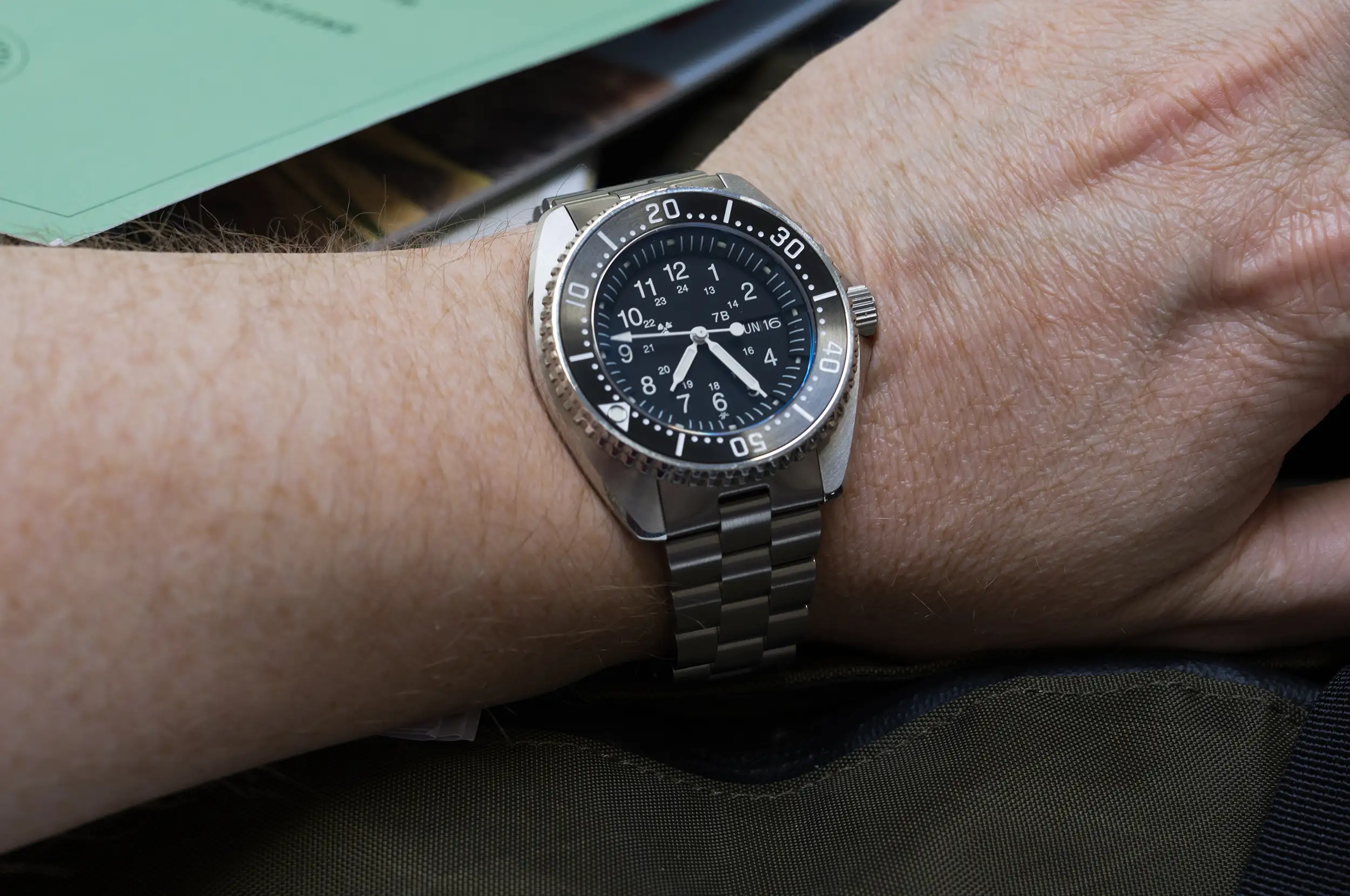
A closer look reveals some interesting details about the design that Tornek Rayville has done well to capture. First is that massive bezel assembly, which feels about two stories high and makes for easy manipulation of the 120 click bezel. Set within is an aluminum insert that is fully indexed, and sloped inward toward the dial. The bezel and insert is very similar to that of the Seiko 7002, which also sits two rows high and angles the bezel inward. It’s jarring at first blush, but becomes a defining feature of the design in time.
The most peculiar detail however, is the rehaut, which itself is sloped inward toward the dial. Each five minute segment opens up to reveal a bit of Super LumiNova (BGW9) that looks as though it’s held in a tube that circles the dial. It’s a great design to behold, but less effective in practice thanks to the small surface area of lume. This is a theme that carries throughout the rest of the dial as well. It cleans up and captures the design of the source material, but doesn’t compromise in the service of greater low light legibility.

Inside, they’ve fitted an automatic Seiko SII NH36 movement, which represents the biggest departure from the SANDY 660, which used a battery powered Ronda quartz movement. These watches, and all Military watches for that matter, are not about celebrating horological engineering, but rather about taking the most cost effective and practical route that would allow it to perform as intended. Retaining a quartz movement here wouldn’t have bothered me one bit, but it’s a move likely demanded by the enthusiasts interested in such a watch.
Overall, this Tornek Rayville is an interesting watch for the story it tells, and the high level of execution brought to the table at a $900 price point. It acknowledges a part of Military history in its own way, and continues the brand’s raison d’etre, albeit in a slightly different manner than what was achieved in the 1950s.
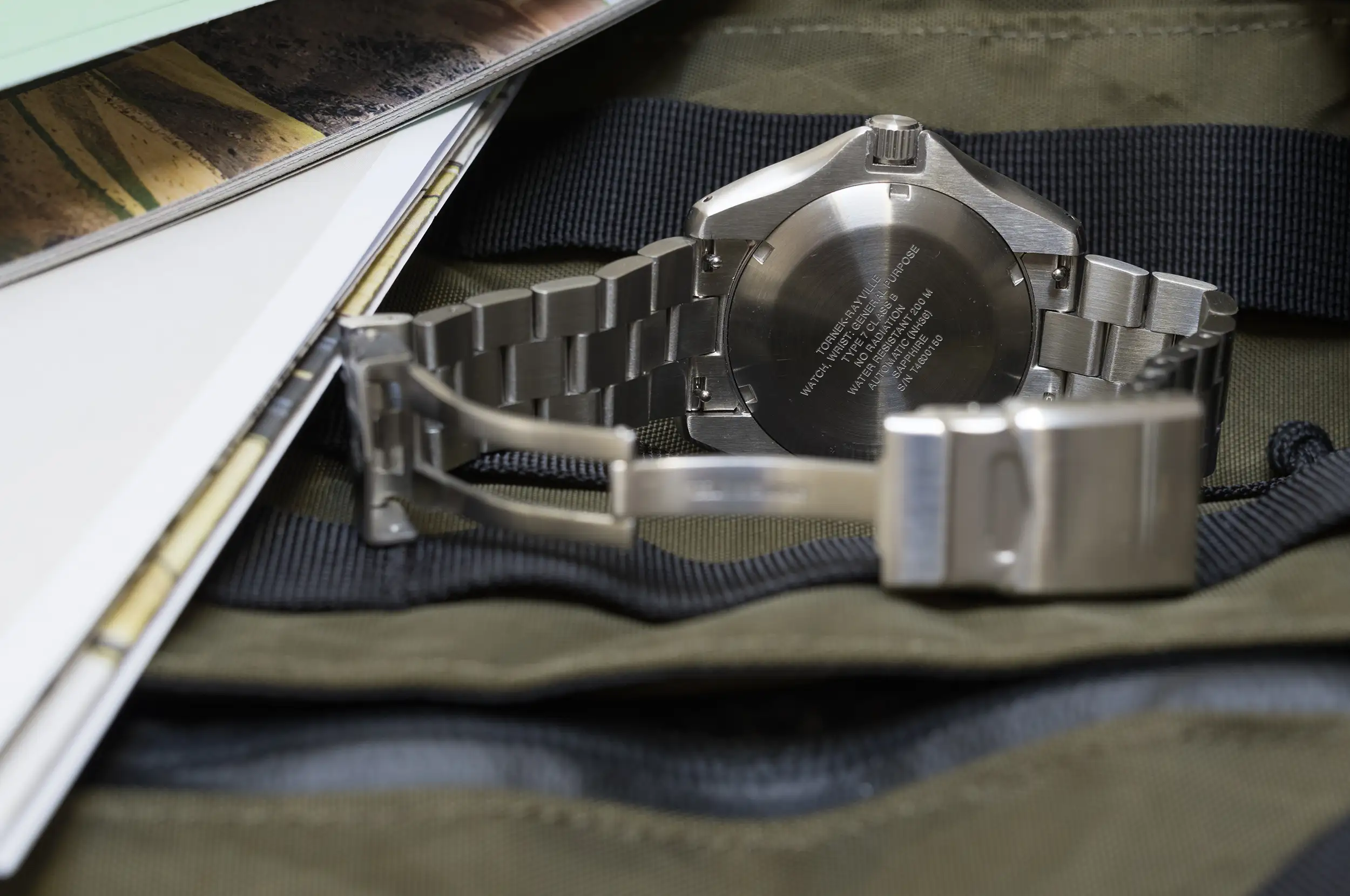
The fictionalized elements of the story presented by Tornek Rayville around the Blakjak Type 7B feel slightly unnecessary to the bigger picture of honoring the actual Military-issued Stocker and Yale watch. The story around the design is authentic and captivating in its own right, and the goal of preserving a lesser known part of Military history is honorable. As mentioned, this captures the history of the SANDY 660 much more effectively than it does present a great viable Military watch ready for action.
This was highlighted to me by an actual combat veteran in this comment on WatchCrunch. User GolenWatchRetriever brings up the concept of noise reduction, which perfectly describes one of the fundamental elements of a great tool watch that I’ve been speaking to for years without having a name for it. He compares the Type 7B to one of the all-time great tool watches, the Sinn EZM1.1, a watch that goes to great lengths to simplify information at a glance, and strip away any unnecessary elements. For example, the writing on the dial is done in deep red, so it disappears at a quick glance, leaving only the functional elements to remain quickly and easily visible. A quick glance at the Type 7B reveals a far more dense landscape of information, which can take time and energy to effectively read quickly (a necessity in high stress situations).
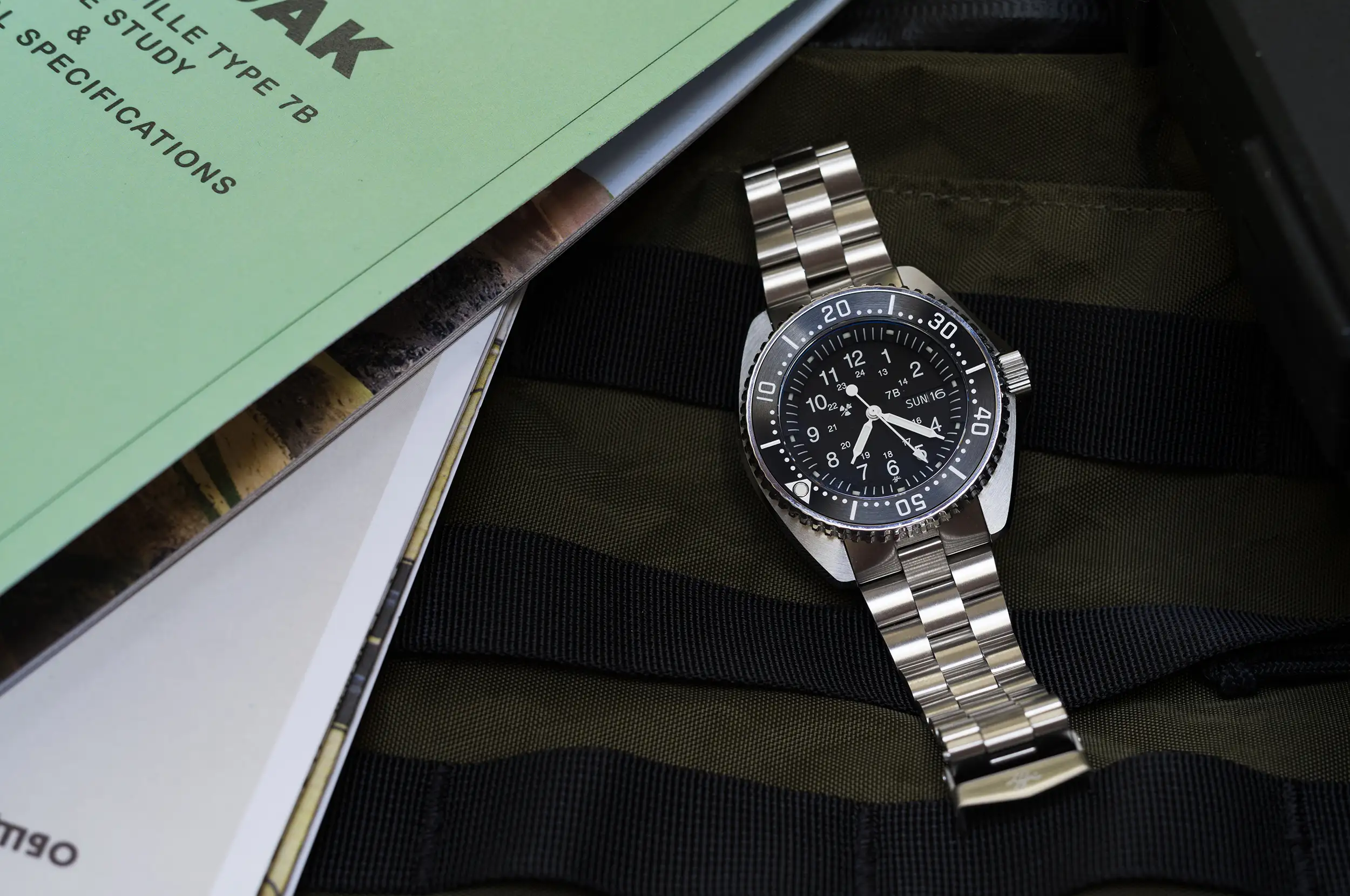
The commenter goes into great detail about why these things matter, and deconstructs how they might be put to use in the field. My interpretation of the Type 7B follows a similar logic, though outside of any battle-ready context. Clean and simple are features I prize in tool watches even in far less stressful situations, with unique bits of personality serving as added bonus. This Tornek Rayville has plenty of personality, which makes the direct placement of it within a fictional war scene feel all the more unnecessary. Same goes for the no-rad symbol on the dial.
Setting that aside, there’s still plenty to enjoy about this watch for a regular civilian. Plus, it does capture the story of the Stocker and Yale watch in a meaningful way. It is the antithesis of a watch like the Tudor Pelagos FXD in black, which was released as a nod to Tudor’s own issued watches worn by the UDT, but features an execution that brings it up to date in a way that moves the concept forward. The result is an exceptional modern tool watch that feels good enough to excel under any circumstance, including the stresses of war. It feels like the kind of watch that falls into that first category, a tool watch that would be used in the field, by service men and women. There are no caseback markings on that watch, and no visual nods to the vintage Tudor Submariner references upon which it is based, it’s just a straightforward, easy to use, no nonsense tool watch. It tells its story in a different way.

I have no doubt that Tornek Rayville is capable of making such a watch, but that’s not their purpose, and it’s not what this watch has set out to do. The above is not a judgment on the Type 7B, but a distinction about how to fully appreciate this watch. Tornek Rayville are preserving the memories of the tools once issued, and building on these ideas in a way that honors their purpose. In this, the Blakjak Type 7B is an unequivocal success.
The Tornek Rayville Blakjak Type 7B can be specced with a 12 hour GMT bezel, or an elapsed time bezel as pictured here. It ships with a steel bracelet fitted with quick release spring bars, as well as a rubber dive strap, and a Maratac™ “Mil Series” black nylon strap. This watch is priced from $895. More from Tornek Rayville.

